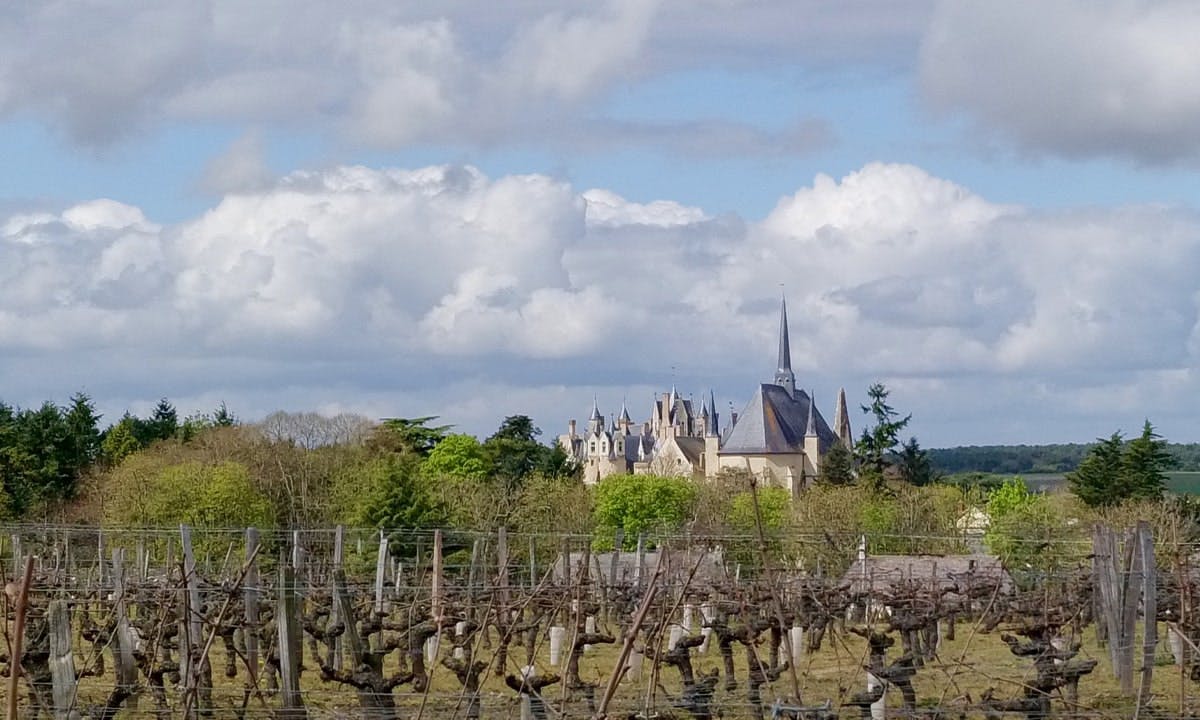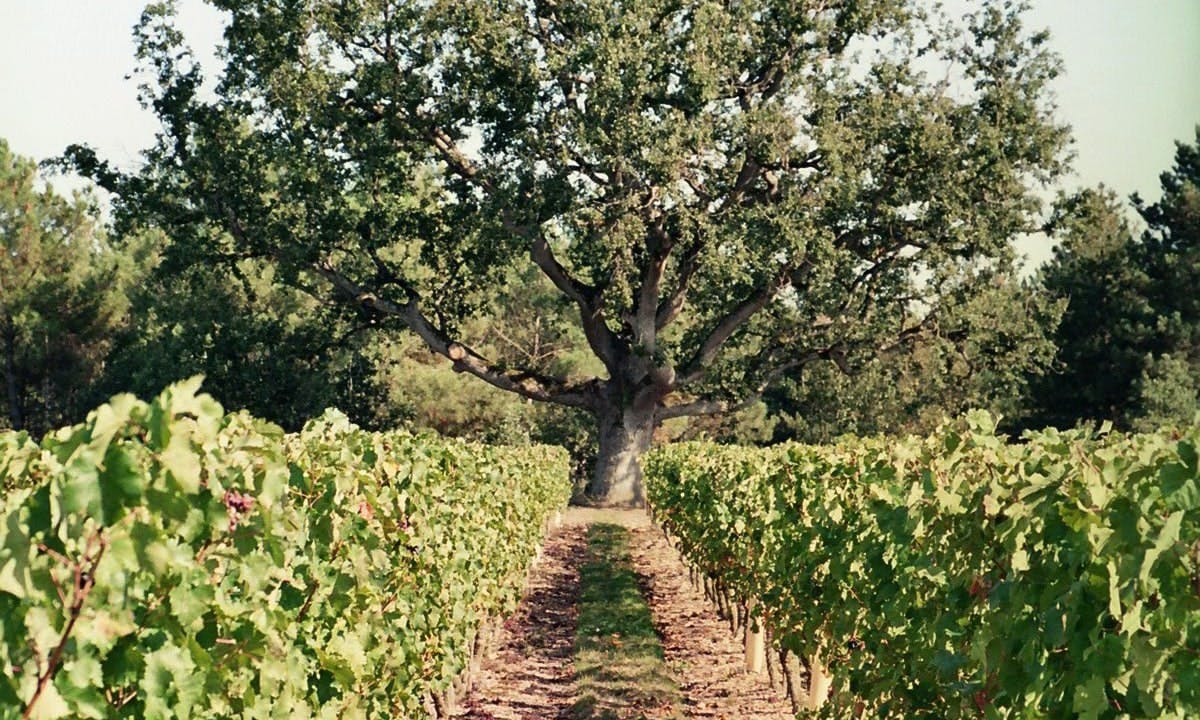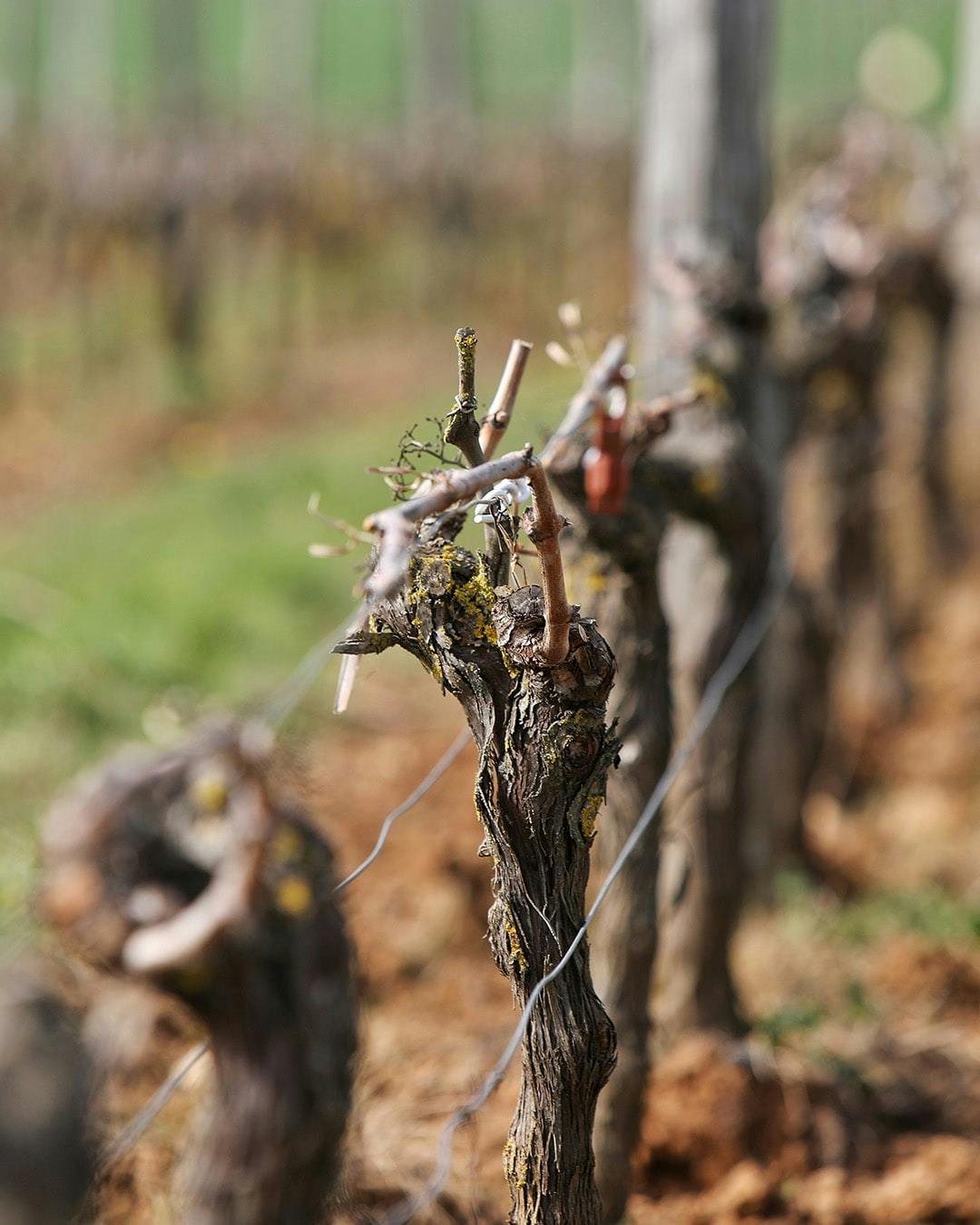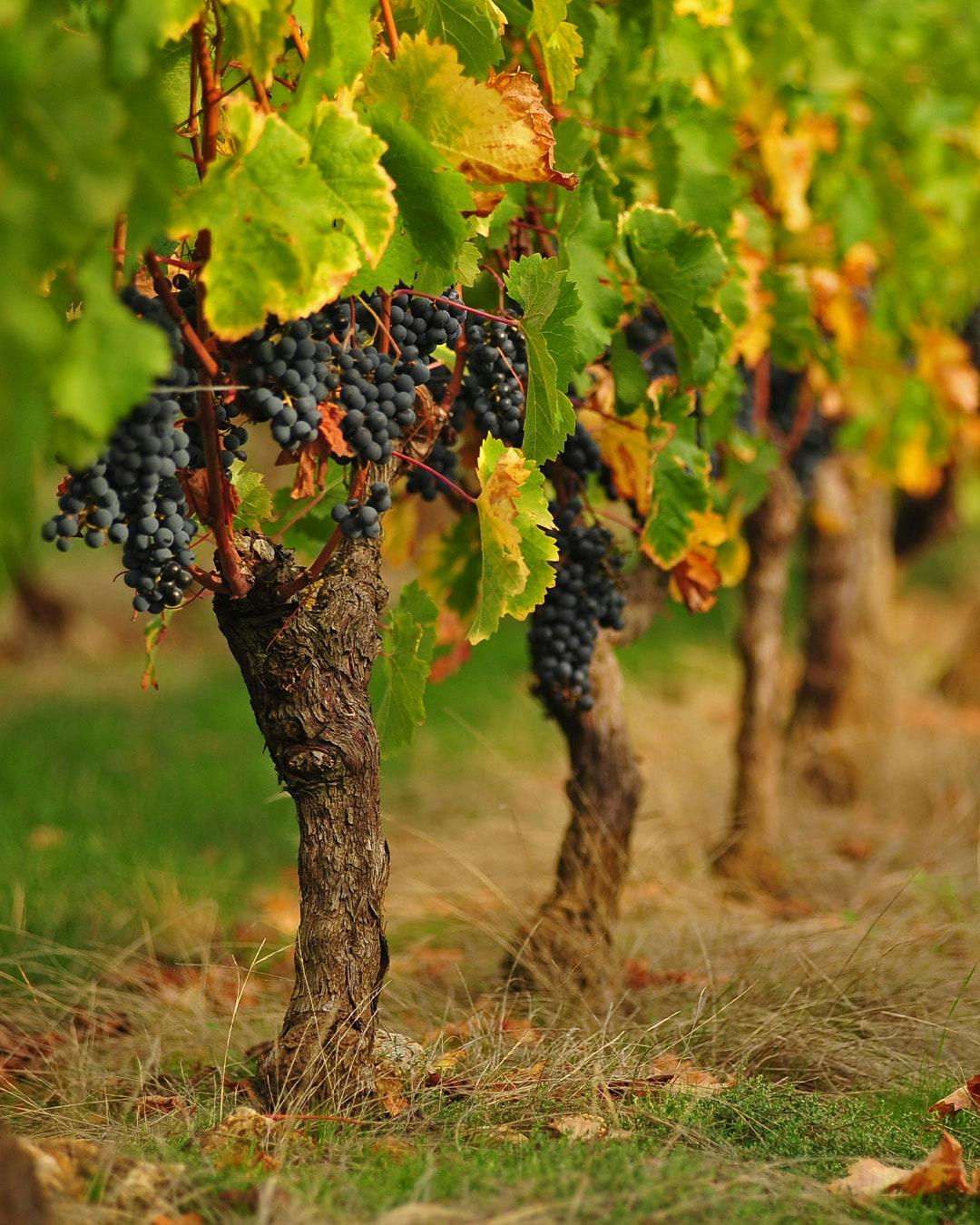Back
Wine Estate
A vineyard certified organic in 2023

The Château de Montreuil Bellay wine estate is anchored in the Loire Valley. It produces wines with the “Saumur” and “Crémant de Loire” appellations.
The terroir, dominated by sand and gravel, extends over 16 hectares planted with Cabernet Franc, Chenin and Chardonnay grape varieties. The vineyard is managed using the mixed Guyot method. The orientation of its location promotes optimal sunshine.
It has been certified in Organic Agriculture "AB - BIO-FR-01" (ECOCERT Certificate number 23/230687/120520232250 of May 12, 2023) since the 2023 harvest. It has also been labeled “High Environmental Value" level 3 since July 29, 2021 (OCACIA Certificate n° VCE-3-01066-0274_1). The validity of this certificate which expires on July 28, 2024 has been extended until December 31, 2024. It is currently being renewed.
Remaining on a human scale, our vineyard allows for meticulous manual processing of decisive operations: pruning, disbudding, destemming. The mechanical harvest carried out with the most efficient equipment allows for a clean harvest at the precise moment required by the maturity of the bunches. We reserve the manual harvest, more selective, to the bunches intended for the production of Crémants de Loire, and we plan to extend it in 2025 to the grapes intended for our “Signature” wines: L'Amante and L'Amarante, and even La Flamboyante.
With a density of 4,500 plants per hectare and a spacing of two meters between each row and one meter between each foot, our vineyard benefits from all the care necessary for the harmonious development of the soil and the plants.
The inter-row and the cavaillon are worked mechanically, without chemical treatment. The rows are grassed at a rate of one out of two, which leads the vine to draw its nourishment from the depths of all the geological layers.
Foliage and bunches are protected by using products that respect the environment and comply with the requirements of the organic charter. The height and thickness of the foliage are carefully controlled to maximize exposure and ventilation of the bunches, so as to significantly improve the quality of photosynthesis and the health of the plant.
History of the vineyard

Over the centuries, during the Ancien Régime, the Empire and the Republic, the viticultural activity has always been inseparable from the life of the Château de Montreuil Bellay.
It was around the 5th century that wine growing was born in the Loire Valley. It developed in the 9th and 12th centuries in Montreuil-Bellay thanks to the monasteries and the enthusiasm of the kings of France for this region. At that time, the pressing of the grapes was carried out by a "casse-cou" press, of which the castle still has a copy. The name of this press comes from the neck, the rope, which could break if worn.
From the earliest times of the Middle Ages, the culture of the vine is the main resource of Montreuil-Bellay where there are no less than 160 wine growers. They feared not only frost and hail but also the presence of wolves.
In the 12th century, it experienced a real boom when Henry 2 Plantagenet, descendant of Foulques Nerra, builder of the castle of Montreuil-Bellay, became King of England and served the wines of Anjou at his court.
In March 1373, while besieging Chizé with 1,500 men-at-arms, Bertrand du Guesclin, made Constable of France by Charles V, learned that the English were preparing to send a reinforcement of 1,000 men to defeat him. Du Guesclin had two carts loaded with the wines of Montreuil Bellay placed on their route. The English, intoxicated by their capture, hurried to empty the barrels. Totally drunk, they proved incapable of helping the besieged. The victory of Chizé, in the middle of the 100 years war, put an end to the English domination on Poitou.
During the Renaissance
The Lords of Harcourt developed the plantation of Chenin and Cabernet Franc, our reference grape varieties, and the production of their wines. They marketed their wines through the port of Montreuil-Bellay, the first port of embarkation for goods from Aquitaine. They received the octroi of 15 deniers per pipe of wine (410l) transported on the Thouet, in exchange for the work that they supported to ensure the navigability of the river.
In 1486, Guillaume d'Harcourt granted the lord of Montreuil-Bellay : the right of ban, that is to say the right to sell and to have his wine sold in the city "once a year during 40 days and 40 nights when he wants and without any of his subjects being able to sell during the said time", the right to confiscate wines passing through Montreuil-Bellay judged to be less good than the wines of the castle, the right to gauge grants the lord the right to inspect each cooper's workshop within the jurisdiction of his barony and to correct the pipes and barrels that do not conform and to impose fines and punishments.

Today
The brotherhood has more than 2,000 members worldwide, with commanderies in China and England.
To become a member, the candidate is invited to a generous banquet at the château, washed down with the wines of the estate. Then he or she must climb a spiral staircase, glass in hand, in reverse and without touching the walls!
If he passes the test, he is admitted to swear in front of the portrait of Rabelais:
"When my glass is full, I empty it, when it is empty, I pity it."
The appellations of origin were recognized in 1936. Since then, the increasing sunshine of our vineyard favors more structured wines.
Mr. and Mrs. de Valbray, harvesting owners, take the responsibility in 2005. They spare neither their efforts nor their enthusiasm to perpetuate the excellence of the château's tradition.
They doubled the surface area of the terroir, created new vintages, and implemented the conversion of the vineyard to organic farming.
From the vine to the bottle, they are committed throughout the process to respect the quality of the terroir and the integrity of the grapes, to give the wine its full expression.
In 2023, they undertook the renovation of the Chai, a 15th century structure unique in France.
And the story continues!
